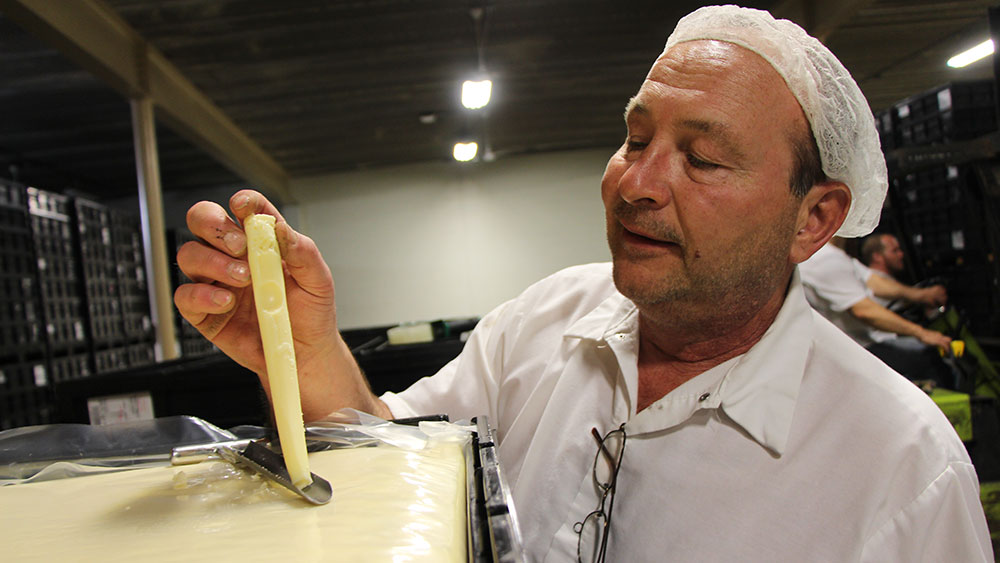Exploring Melbourne Made Cheese: Why Floridia Cheese Is a Must-Try
Exploring Melbourne Made Cheese: Why Floridia Cheese Is a Must-Try
Blog Article
Unlocking the Keys of Artisanal Cheese Making: A Step-by-Step Do It Yourself Guide
In the world of culinary workmanship, artisanal cheese making stands as a testament to the fragile balance in between tradition and innovation. Each step in the procedure, from selecting the appropriate milk to refining aging methods, holds within it a wide range of knowledge gave via generations. As we start this trip to demystify the art of creating exquisite cheeses, we are faced with a tapestry of secrets and skills waiting to be deciphered. Join us as we discover the details of this ancient craft, where art, scientific research, and persistence merge to generate flavors that entice the senses.
Choosing the Right Milk
When beginning on the journey of artisanal cheese making, the option of milk plays a crucial role in determining the top quality and qualities of the final product. The type of milk picked impacts the flavor, appearance, and on the whole profile of the cheese.
Furthermore, the resource of the milk, whether from cows, goats, sheep, or buffalo, adds distinct tastes and characteristics to the cheese. Each kind of milk brings its very own subtleties, permitting for a wide array of cheese varieties to be crafted based on the chosen milk.
Culturing and Coagulating
To initiate the cheese-making procedure, the crucial steps of culturing and coagulating need to be carefully performed to transform milk right into curds and whey. Culturing includes introducing useful microorganisms to the milk, which after that begins the fermentation procedure. These microorganisms convert lactose (milk sugar) right into lactic acid, creating the acidic environment required for coagulation. The kind of culture used can considerably impact the taste, appearance, and ripening of the last cheese item.

The timing and temperature level control throughout culturing and coagulation are important elements that influence the last outcome of celebrity. Proper implementation of these steps is vital to make certain the wanted structure, taste, and consistency of the artisanal cheese being generated.
Draining and Pushing Curds
After the milk proteins have actually coagulated and the curds have been reduced to release whey, the following vital step in artisanal cheese making includes draining and pushing the curds to achieve the preferred texture and uniformity of the last cheese item. Draining pipes is the process of separating the curds from the whey. This can be done by moving the curds into a cheesecloth-lined colander or mold and mildew and allowing the whey to drain pipes off naturally. The moment for draining pipes can vary depending on the kind of cheese being made and the wanted moisture content.
Once the curds have sufficiently drained, the next step is pressing. Pushing aids expel any kind of remaining whey and compacts the curds to develop a strong cheese wheel. Pushing can be done making use of specialized cheese presses that apply gentle and consistent pressure over an amount of time. The period and pressure applied during pressing will influence the final structure of the cheese, from luscious review and soft to hard and company. Appropriate draining pipes and pushing are crucial steps that significantly influence the quality and attributes of the artisanal cheese being generated.
Aging and Flavoring Techniques
Applying precise aging and flavor methods is crucial in enhancing the deepness and complexity of artisanal cheeses, raising their preference profiles to exquisite degrees of improvement and class. Aging plays a crucial function in creating the distinct tastes and textures that identify artisanal cheeses.
Flavoring strategies likewise add considerably to the last taste of artisanal cheeses. Cheesemakers may select to introduce extra tastes by including ingredients such as herbs, flavors, and even fruits right into the cheese during the production process. In addition, some cheeses are cleaned or rubbed with different liquids, such as salt water or alcohol, to enhance their flavors and textures.
Wrapping and Keeping Cheeses

Final Thought
Finally, understanding the art of artisanal cheese making involves carefully choosing the right milk, adhering to accurate culturing and coagulating processes, draining pipes and pressing curds effectively, and using various aging and flavor methods. By adhering to these steps diligently and with focus to information, you can develop your own tasty and special cheeses in the house. Remember to wrap and keep your cheeses properly to make sure optimum flavor and structure growth. Happy cheese making!
Each kind of milk brings its very own subtleties, permitting for a vast array of cheese selections to be crafted based on the chosen milk.After the milk proteins have coagulated and the curds have been reduced to launch whey, the following important step in artisanal cheese making includes draining pipes and pushing the curds to attain the wanted texture and consistency of the final cheese try this website product. Many cheeses must be covered in wax paper or cheese paper to permit them to breathe while protecting them from drying out. For cheeses that need to proceed aging, such as bloomy peels or cleaned peels, guarantee they are kept in a trendy environment like a cheese cave or a fridge established to the proper temperature level. By paying attention to the wrapping and storage of artisanal cheeses, cheese makers and lovers can maintain the integrity of these delicacies and fully enjoy their complex flavors.
Report this page